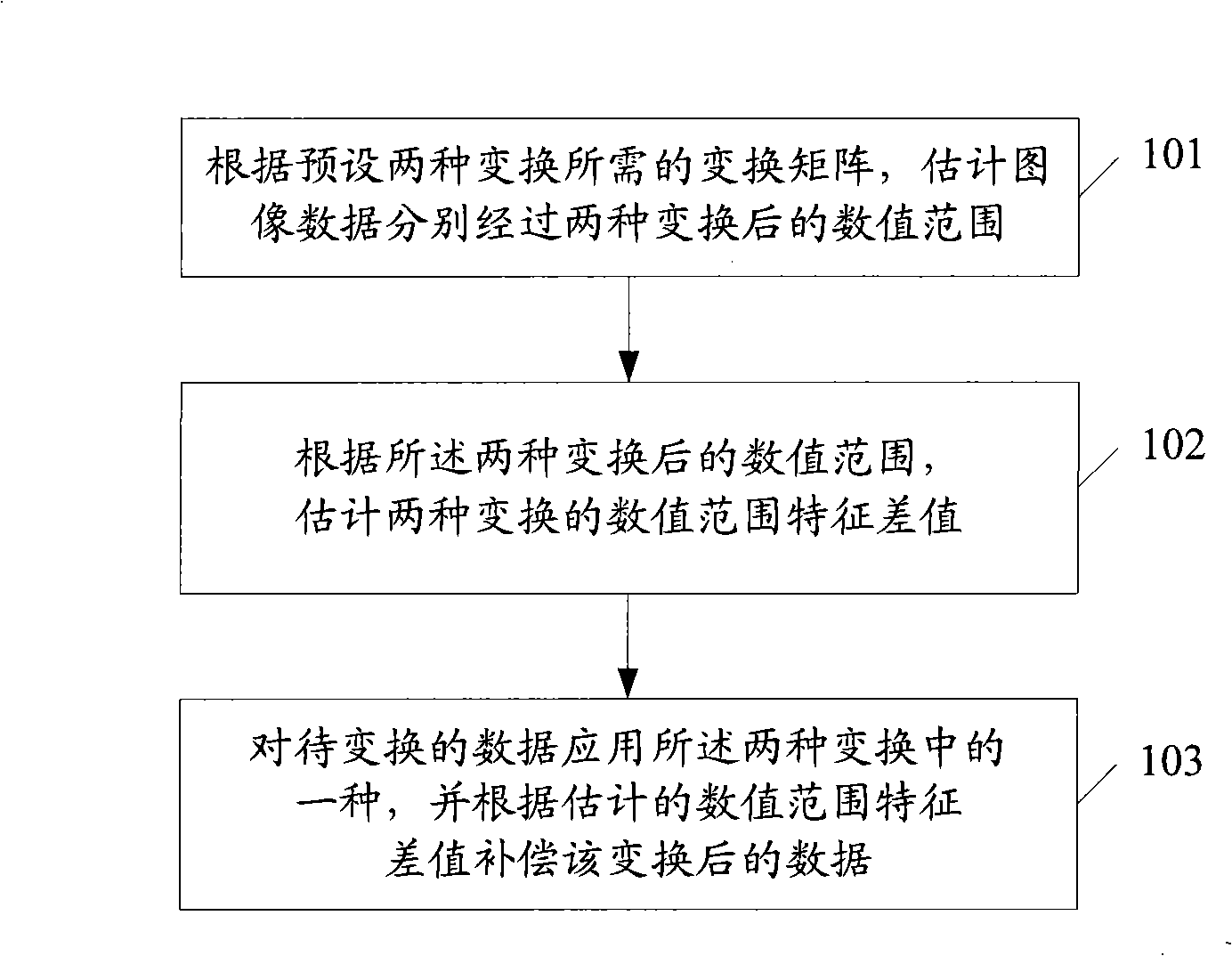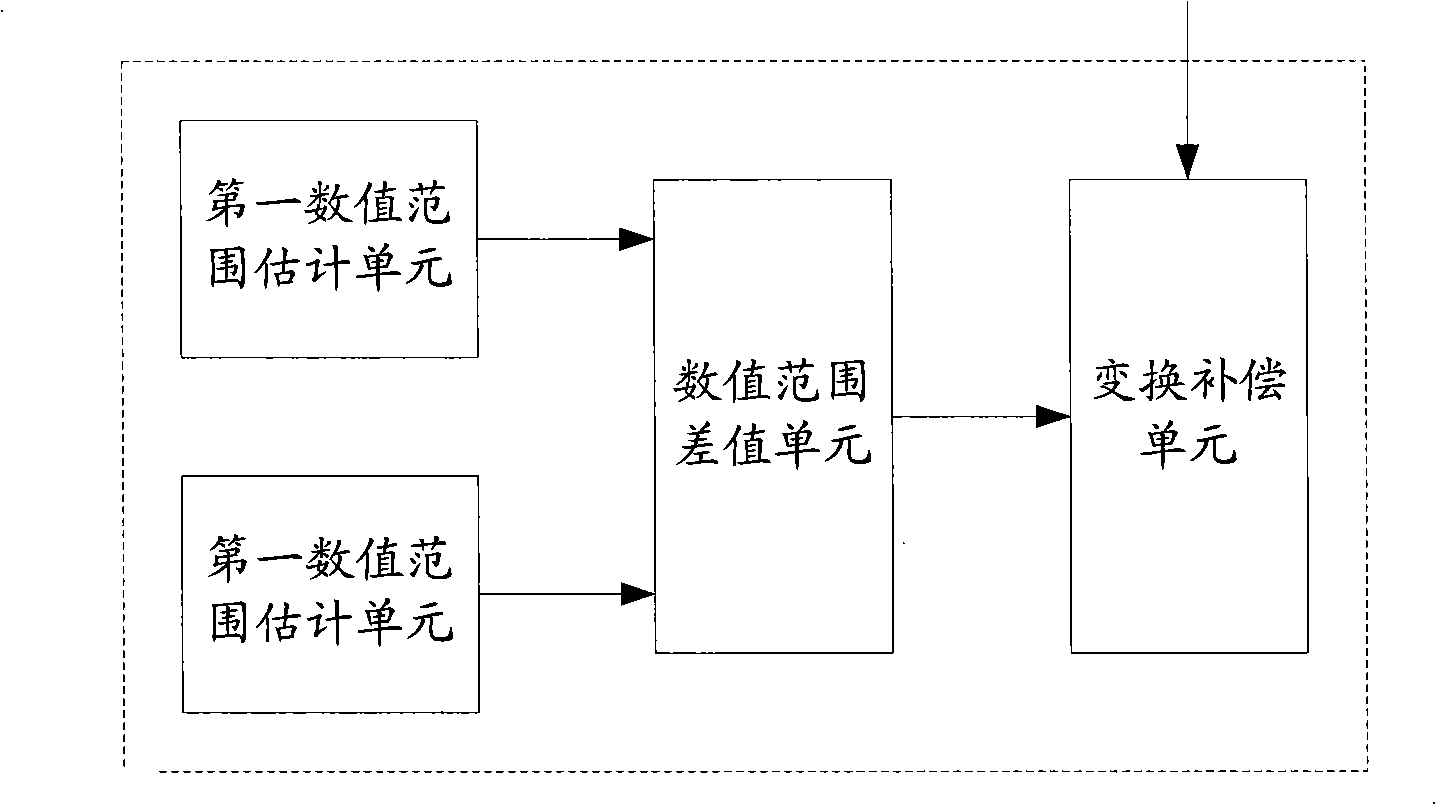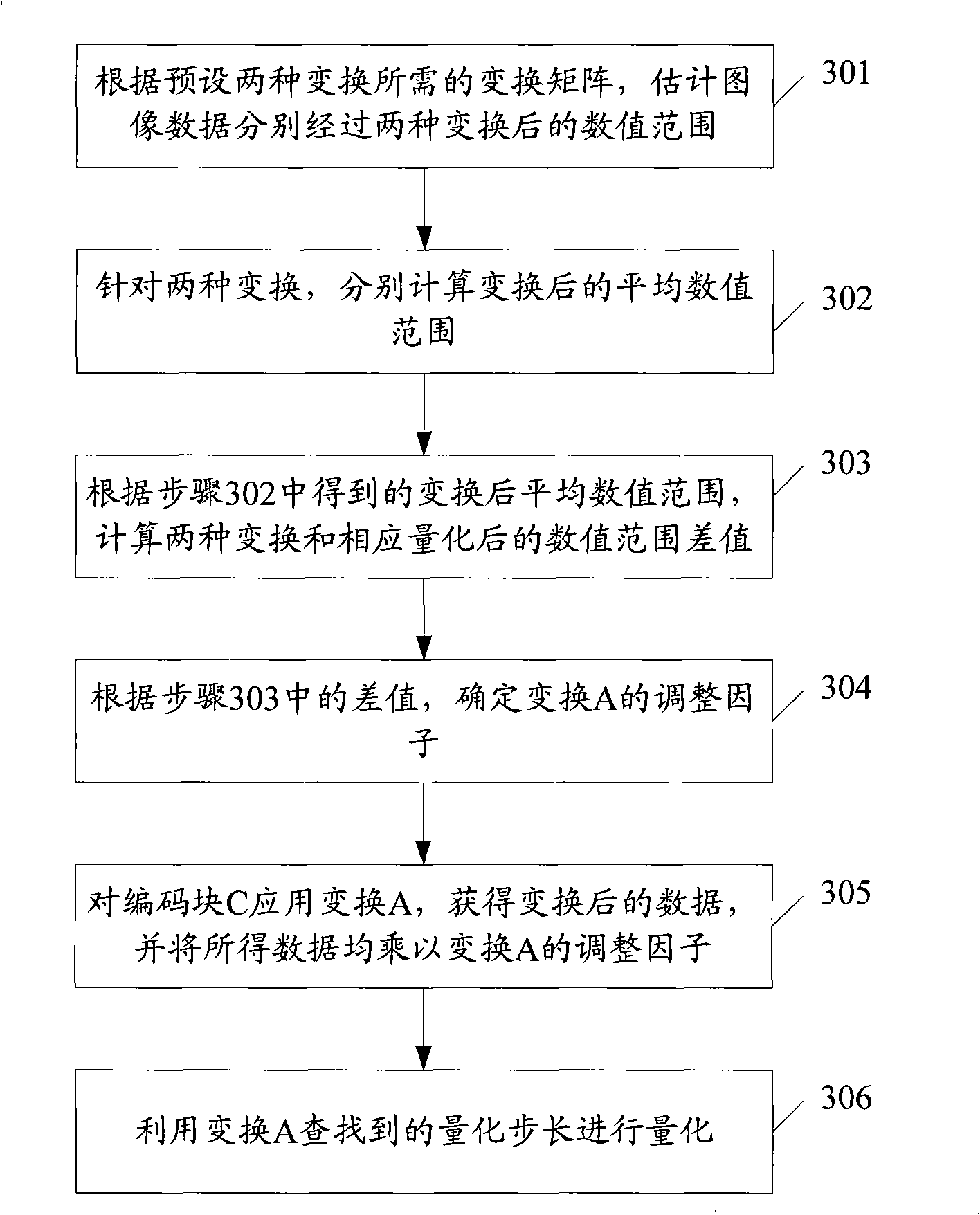Method and apparatus for processing transformation data, method and apparatus for encoding and decoding
A technology of data processing and transformation processing, applied in digital video signal modification, television, electrical components, etc., can solve the problems of data information damage, inability to effectively improve data coding efficiency, and not having the same transformation characteristics, so as to improve coding efficiency effect
- Summary
- Abstract
- Description
- Claims
- Application Information
AI Technical Summary
Problems solved by technology
Method used
Image
Examples
Embodiment 1
[0090] In this embodiment, it is assumed that there is a coded data block C, and a transform A and a transform B. The scale of transformation A is n×n, and the scale of transformation B is m×m. Use the quantization point QP when encoding the data block C s , Transform A and Transform B are QP at the quantization point s The quantization steps found at the time are QTAB1[s] and QTAB2[s] respectively. Here, when data is quantized, each different coding area (for example, data block C) corresponds to a quantization point, and the corresponding quantization step is found according to the quantization point, and the quantization process is performed. Adjust the numerical range of the data obtained by transformation A and corresponding quantization to make it consistent with the numerical range of the data obtained by transformation B and corresponding quantization. In this embodiment, the characteristic difference of the numerical ranges of the two transformations is the differe...
Embodiment 2
[0152] In this embodiment, similar to Embodiment 1, the characteristic difference of the numerical ranges of the two transformations is the difference between the numerical ranges of the image data after the two transformations and the corresponding quantization, but the specific calculation method of the difference is the same as that of Embodiment 1. different.
[0153] Figure 5 It is a specific flowchart of the method for processing transformed data provided in this embodiment. Such as Figure 5 As shown, the method includes:
[0154] Step 501 , according to the preset transformation matrices required for the two transformations, estimate the numerical ranges of the image data after the two transformations respectively.
[0155] The estimation method of this step is the same as that of step 301 in the first embodiment, and will not be repeated here.
[0156] Step 502, calculate the average value range after transformation B.
[0157] In this step, the mode of calculat...
Embodiment 3
[0175] In this embodiment, the compensation method for the data obtained by transforming A is different from the previous two embodiments, and the method of adjusting the quantization point is adopted for compensation. In addition, similar to the first embodiment, the feature difference of the numerical ranges of the two transformations in this embodiment is the difference between the two transformations and the corresponding quantized numerical ranges of the image data. specifically, Figure 6 It is a specific flowchart of the method for processing transformed data provided in Embodiment 3. Such as Figure 6 As shown, the method includes:
[0176] Steps 601 to 603, according to the preset transformation matrices required for the two transformations, estimate the numerical ranges of the image data after the two transformations respectively; for the two transformations, calculate the average numerical ranges after the transformations respectively; and calculate the sum of the...
PUM
 Login to View More
Login to View More Abstract
Description
Claims
Application Information
 Login to View More
Login to View More - Generate Ideas
- Intellectual Property
- Life Sciences
- Materials
- Tech Scout
- Unparalleled Data Quality
- Higher Quality Content
- 60% Fewer Hallucinations
Browse by: Latest US Patents, China's latest patents, Technical Efficacy Thesaurus, Application Domain, Technology Topic, Popular Technical Reports.
© 2025 PatSnap. All rights reserved.Legal|Privacy policy|Modern Slavery Act Transparency Statement|Sitemap|About US| Contact US: help@patsnap.com



